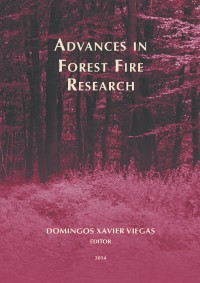Please use this identifier to cite or link to this item:
https://hdl.handle.net/10316.2/34027| Title: | Analysis of the jump fire produced by the interaction of two oblique fire fronts: Comparison between laboratory and field cases | Authors: | Raposo, Jorge Viegas, Domingos X. Xie, Xiaodong Almeida, Miguel Naian, Liu |
Keywords: | Forest fire behaviour;Jump fire;Merging fire;Dynamic effect;Extreme Fire | Issue Date: | 2014 | Publisher: | Imprensa da Universidade de Coimbra | Journal: | http://hdl.handle.net/10316.2/34013 | Abstract: | The merging of two linear fire fronts intersecting at a small angle creates an accelerating fire that is designated as “jump fire”, given the very high value of the rate of spread that it can reach in a relatively short time. In this work an analysis of the jump fire process based on laboratory scale, field scale experiments and large fire scale observation was performed. This confirmed that independently from the scale of analysis the fire in this condition follows the same behaviour pattern that is due to the fire geometry and to the associated heat transfer mechanisms that induce the phenomenon of a quick acceleration followed by a deceleration phase. S type pitot tubes were used to study the flow pattern inside or near the fire front to better understand the mechanisms of fire induced convection given its very important role in these fires. | URI: | https://hdl.handle.net/10316.2/34027 | ISBN: | 978-989-26-0884-6 (PDF) | DOI: | 10.14195/978-989-26-0884-6_8 | Rights: | open access |
| Appears in Collections: | Advances in forest fire research |
Files in This Item:
| File | Description | Size | Format | |
|---|---|---|---|---|
| 978-989-26-0884-6_8.pdf | 1.69 MB | Adobe PDF |  |
Items in DSpace are protected by copyright, with all rights reserved, unless otherwise indicated.
